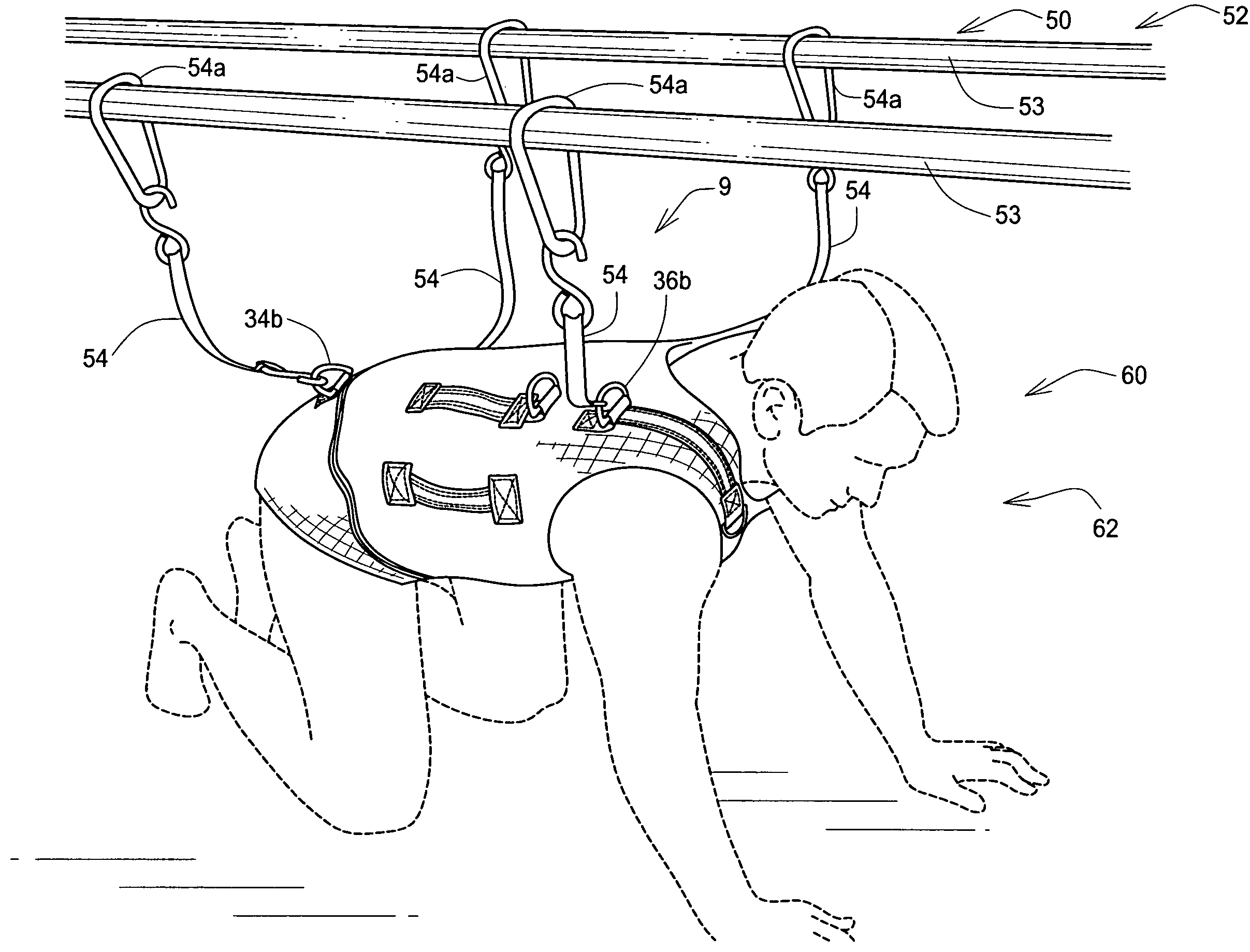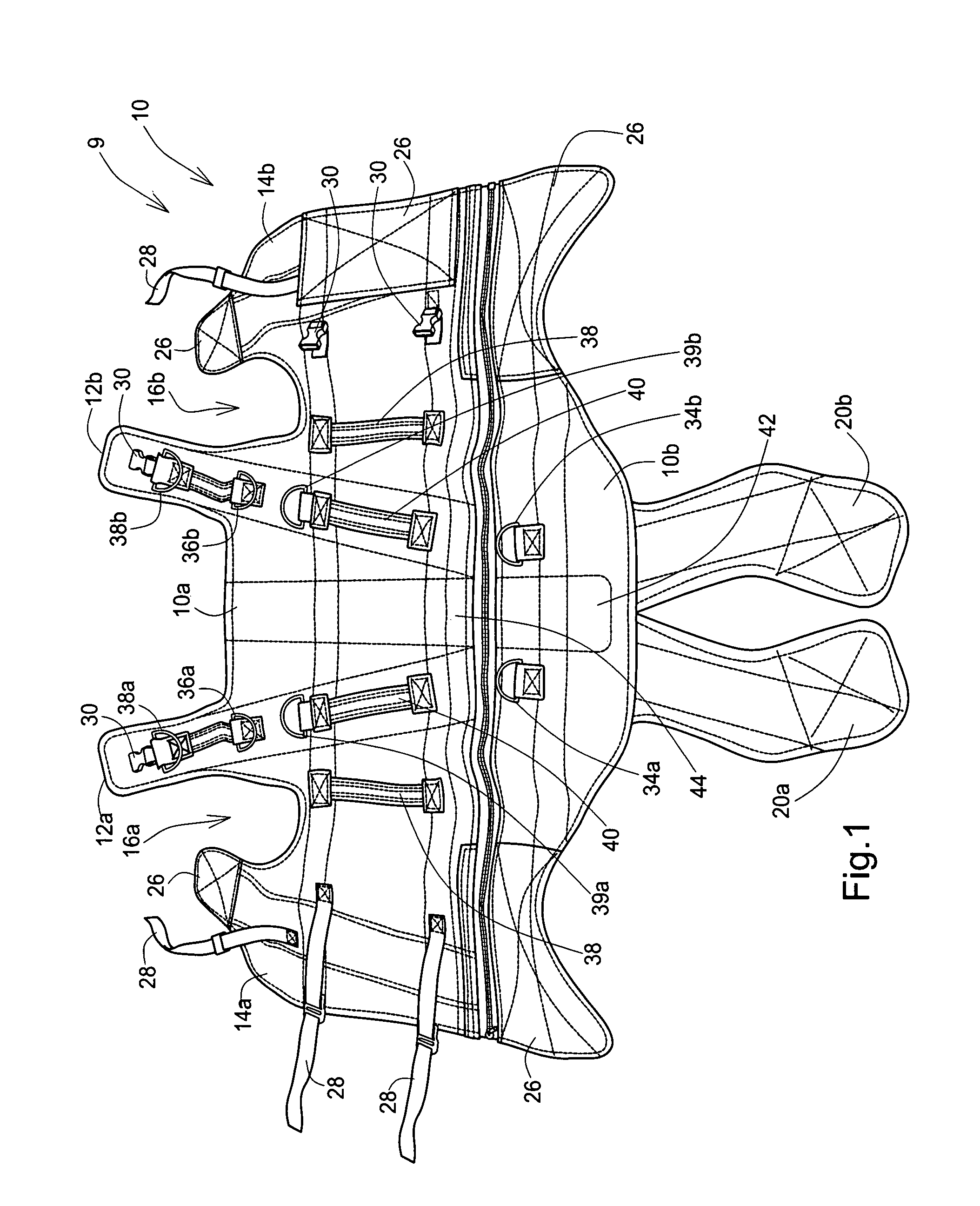Unweighting assembly and support harness for unweighting a patient during rehabilitation
a technology for unweighting and rehabilitation, applied in the field of unweighting assembly, can solve the problems of difficult or impossible for the patient to maintain his or her balance, difficulty in maintaining his/her body in a desired configuration, and difficulty in maintaining his/her torso in a generally horizontal position
- Summary
- Abstract
- Description
- Claims
- Application Information
AI Technical Summary
Benefits of technology
Problems solved by technology
Method used
Image
Examples
Embodiment Construction
[0027]Referring now to the present invention, FIGS. 1 and 2 show a support harness 9 for unweighting a patient during rehabilitative exercises, where FIG. 1 shows the exterior surface of the support harness 9 and FIG. 2 shows the inner surface of the support harness 9. The support harness 9 includes a harness body 10 that generally fits substantially completely around the patient's trunk (which is defined herein as the portion of the patient's body extending from the shoulders to the buttocks, not including the arms). This configuration provides robust support for the patient so as to avoid high stress concentrations on the patient's body. The harness body includes an upper portion 10a configured to support the patient's torso region and a lower portion 10b configured to support the patient's crotch region.
[0028]The harness body 10 includes a pair of shoulder flaps 12a, 12b that each wrap over the patient's respective shoulders and are secured to chest flaps 14a, 14b via an appropri...
PUM
 Login to View More
Login to View More Abstract
Description
Claims
Application Information
 Login to View More
Login to View More - R&D
- Intellectual Property
- Life Sciences
- Materials
- Tech Scout
- Unparalleled Data Quality
- Higher Quality Content
- 60% Fewer Hallucinations
Browse by: Latest US Patents, China's latest patents, Technical Efficacy Thesaurus, Application Domain, Technology Topic, Popular Technical Reports.
© 2025 PatSnap. All rights reserved.Legal|Privacy policy|Modern Slavery Act Transparency Statement|Sitemap|About US| Contact US: help@patsnap.com



